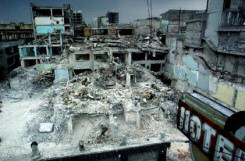Tragedy introduction
Violence causes tragedy and it's a global public health issue which caused a great panic through different societies since the year 2000. It is a leading cause of death for people aged 10 - 44 years.
 The 20th century was one of the most violent periods in human history. More than half of the people who lost their lives to
conflict throughout the world were civilians.
The 20th century was one of the most violent periods in human history. More than half of the people who lost their lives to
conflict throughout the world were civilians.
Not everyone is equally at risk of being involved in violence either as a perpetrator or as a victim. The risk of involvement in some types of violence differs as gender (men are more principal as victims and perpetrators of homicide, while women are the victims of intimate partner and sexual violence); and by age (rates of physical violence rise at age 15 and remain high to age 44). Also, environmental and community characteristics (such as high unemployment rates) influence levels of violence, and countries with higher levels of income inequality also tend to experience higher levels of homicide. Researches show that youngsters who live in neighborhoods and communities with high levels of crime and poverty are at greater risk of violence.
In 2000, violence among young people caused about 199,000 youths dead. The highest rates of youth homicide are found in Africa and Latin America and the lowest rates in Western Europe and parts of Asia and the Pacific. For every young person killed by violence, about 20-40 receive injuries that require hospital treatment. This ratio is greater in some countries, including Israel, New Zealand and Nicaragua. Each year, around 520,000 people die due to interpersonal violence, and millions more suffer the effects of non-fatal violence.




